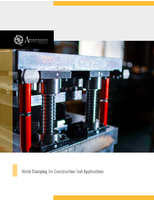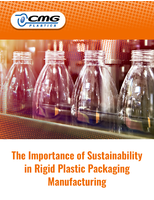VEGA Level Radars Help Deliver £12M Savings at TATA
Share:
After a lull in demand during the global downturn, TATA Steel in Scunthorpe is running at full capacity again producing steel slab, billets, structural sections, rail and wire rod for the UK and world markets. As a company in the forefront of UK manufacturing, the focus is always is on efficiencies on the plant, with attention on process improvement strategies in all areas of production.
Once the iron is manufactured in the Blast Furnaces, it is transported in a rail mounted 'torpedo' vessel to the Basic Oxygen Steelmaking (BOS) plant for conversion to steel. When it arrives at the BOS plant, it is discharged into large 300 ton capacity ladles used for both charging the converters and receiving the finished steel once the process is complete. The level in a steel-pouring ladle is referred to as 'freeboard', ( freeboard is a nautical term: the level between the sea and the 'freeboard' deck of a ship) in a steel works, this is the difference between the top edge of the ladle and the surface of molten metal level inside. This important parameter in a steelmaking plants is very difficult to determine accurately and repeatably, especially while the steel is being 'tapped' from the converter. After it is filled, it is often also mixed with an argon lance to prevent stratification and homogenise any additives, if the steel level is too high, the turbulence could cause dangerous spills. However, ensuring the capacity of the ladles is also maximised for every fill plays a key part in efficiency on the plant, where a few centimetres represents tonnes of steel. So there are challenges, even for the most experienced operator, with the very high radiated temperatures, glare, molten steel and sparks during a tapping operation. The operators are skilled and careful, they normally pick a point on the ladle and watch it carefully as the molten steel fills to the required 'freeboard'. But all eyes and ladles vary slightly, so getting an accurate, safe level of molten steel can be challenging and the levels always correctly err on the safe, low side. So, if the freeboard measurement could be augmented to be more reliable and consistent then, with the increased productivity and safer handling of the product over the thousands of fills per year, the potential for efficiencies are huge.
TATA turned to non-contact VEGAPULS radars to assist with this application. VEGA has long experience of applying successful level measurements across the steel industry globally, including Blast Furnace burden level, Off-gas duct build-up monitoring, Torpedo and Ladle level, as well as bulk solids level measurement of raw materials such as ore, coke, coal and lime in both bulk and day bunkers. VEGAPULS radars work using low power microwave pulses which are reflected from the surface to measure the level; in this case, the molten metal in the ladle, they are also largely unaffected by temperature, pressure, dust or vapours. For peace of mind, the technical manager of VEGA attended site to do a test with a temporary set-up system, the results were very encouraging and as a result of the report provided, Tata ordered a permanent system. For this application VEGA supplied units fitted with an extended, right angled wave guide tube to keep the electronics away from the hot area where the antenna is mounted. (see picture) A purging system is also installed should build-up of dust occur in the antenna over time, it can also be used for cooling on some applications, however to date neither function has been required on this application. The VEGAPULS radar is mounted approximately 8m above the low level point, but still capable of measuring the level to a repeatability of 2mm. With a narrow focussed beam and accomplished signal processing software, it reads the level real-time, even during filling. By enabling a safer, more accurate measured fill each time, Tata are achieving an average of just 100mm extra level in each vessel, it doesn't sound much, but it equates to an extra 10 tonnes per ladle - this improvement on all 3 transfer stations, will contribute towards £12million a-year efficiencies on the plant. As well as supplying the radar gauges, VEGA have also provided after sales engineering support, commissioning and training for technicians on the site, underwritten by their standard 3 year UK warranty, even in this harsh environment.
All text and pictures are available contact doug.anderson@uk.vega.com
VEGA Controls Ltd
Kendal House, Victoria Way
Burgess Hill, West Sussex
RH15 9NF
Tel: 01444 870055
Fax: 01444 870080




